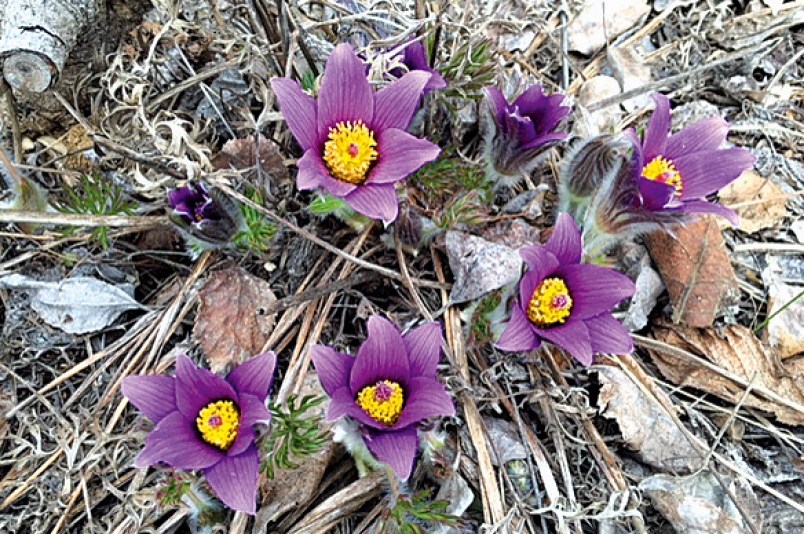The prairie crocus is a lovely spring flower that goes by many names. Even scientifically it has three names – Anemone patens, Pulsatilla ludoviciana and Pulsatilla patens. It has many relatives around the world that have a similar appearance, varying primarily in colour and size, but all are early spring flowers.
Common names for this plant include pasque flower, wind flower, Easter flower, meadow anemone, gosling plant and prairie crocus. Although this Manitoba emblem is usually considered a prairie flower, its habitat spreads far beyond the prairies both north and south. We have found it in April and May on sunny slopes and open woods throughout our area.
The leaves and flowers of the prairie crocus are covered in silky hairs, which help protect the plant from the cold. The flowers close at night. All parts of the plant are poisonous if taken internally, and irritating externally. This innocent-looking plant contains a toxin that slows the heart, and can lead to vomiting, diarrhea, convulsions and coma. It is used in homeopathic medicine.
On the prairies this crocus is not as common as it once was, and in our boreal region you have to look for it carefully to find it. Many have attempted to transplant this wildflower into the garden, with little success. The roots are deep, and are associated with fungi in the soil. For these reasons it does not transplant well. If you revisit the crocus patch later in the season, usually in July here, you can collect seeds from the fluffy seed-heads. Be sure to leave some seeds behind for the plants to regenerate.
To grow crocus from seed requires patience – it takes three to four years to bloom from seed. The seed is best planted when it is fresh, as soon as it is collected, otherwise it goes dormant and will need stratifying (winter or cold for several weeks). Older or purchased seed is best planted outside in late fall for germination the following spring. In the garden the plants prefer sandy soil and a sunny, hot location.
Easier to grow is the European Pasqueflower or crocus, Pulsatilla vulgaris. This plant has larger, deeper coloured flowers in shades of purple to red, and also white. The plants can be purchased, although they are not easy to find. They can also be started from seed, using the cold treatment method, unless you can obtain fresh seed. They will grow in ordinary garden soil in sun or light shade. They may self-seed if you recognize the seedlings and don’t weed them out.
This early bloomer is well worth the effort to find plants or seeds.




